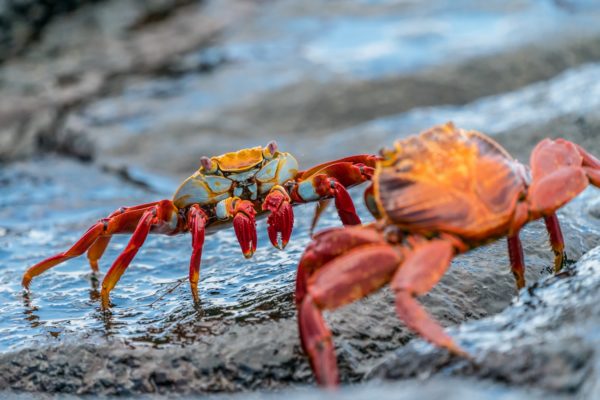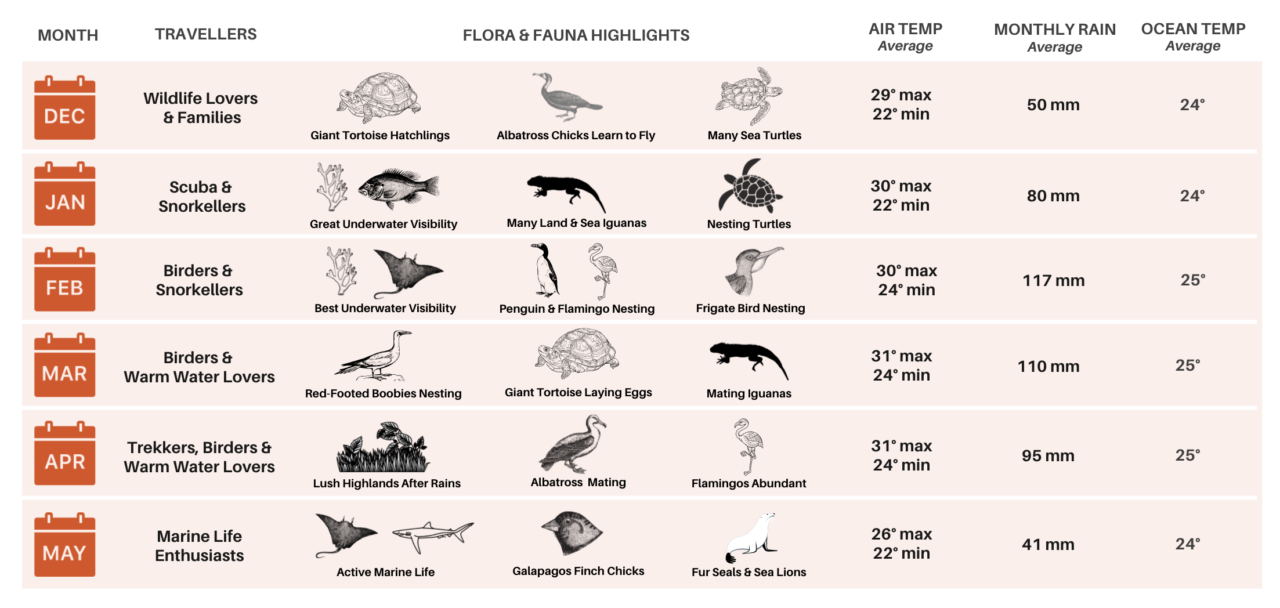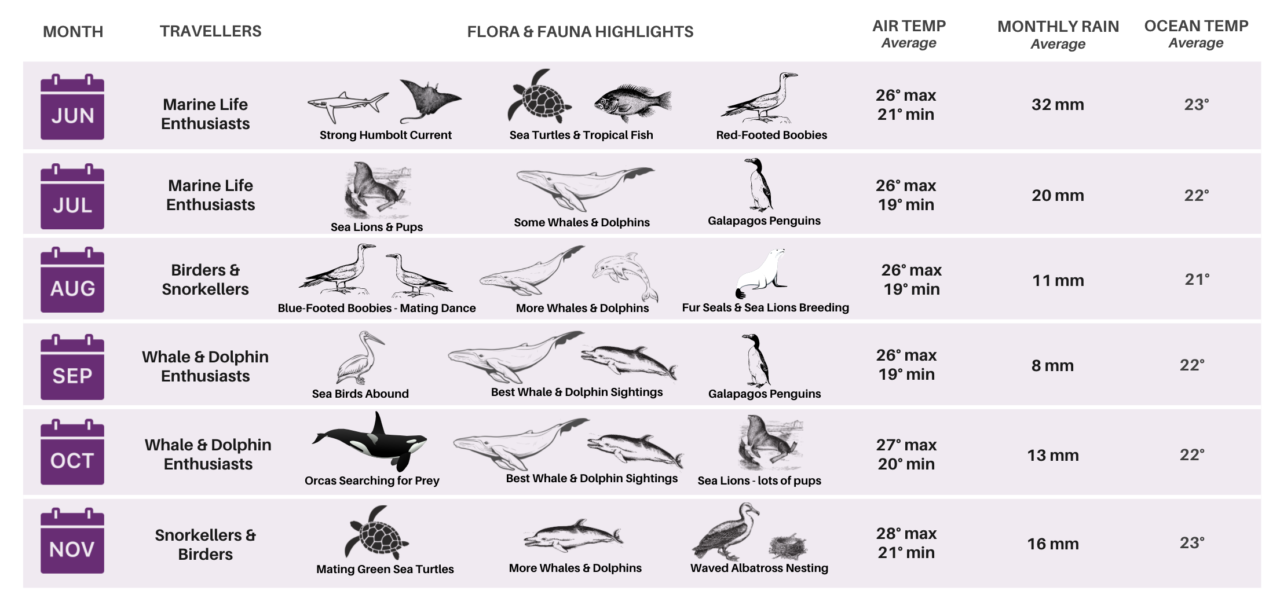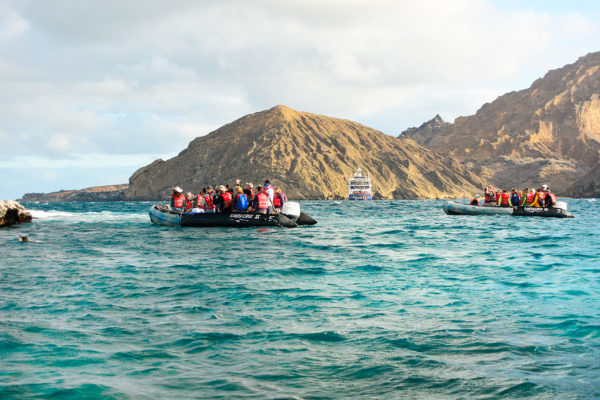 The Galapagos Islands are a stunning volcanic archipelago in the Pacific Ocean, far off the coast of Ecuador in South America. providing endless wildlife experiences in a variety of countries and styles. The 19 islands and surrounding marine reserves that make up the archipelago are UNESCO listed as providing ‘Outstanding Universal Value’ due to the incredible diversity of wildlife that developed in geographic isolation.
The Galapagos Islands are a stunning volcanic archipelago in the Pacific Ocean, far off the coast of Ecuador in South America. providing endless wildlife experiences in a variety of countries and styles. The 19 islands and surrounding marine reserves that make up the archipelago are UNESCO listed as providing ‘Outstanding Universal Value’ due to the incredible diversity of wildlife that developed in geographic isolation.
The Galapagos Islands are crossed by three major ocean currents; the cold Humbolt Current (also known as the Peru Current) from the east, the warm Panama current from the north, and the deep sea Cromwell Current from the west. This mixing of currents mean the marine reserves surrounding the archipelago is a melting pot of unique species – perfectly suited to travellers interested in wildlife, biology and history. After Charles Darwin visited the Galapagos in the early 1800’s, he was inspired to write his theory on evolution via natural selection. The Charles Darwin Research Station is a fantastic stop anyone visiting Santa Cruz Island.
Below we provide an overview of the islands and wildlife as well as the seasonality of the Galapagos. After reviewing this general Galapagos information, we recommend choosing between a land based island hopping itinerary or a cruise. Once you have settled on how you want to explore, consider which islands in the Galapagos to visit. No matter which option you choose, you can expect wildlife and beautiful island scenery to be the highlights of your adventure.
Seasons & Wildlife
Due to its location on the equator, seasons in the Galapagos do not vary as much as areas like Patagonia or Antarctica. However, there are some key differences to be aware of. First there is the Warm & Wet Season from December to May followed by the Cool & Dry Season from June to November. No matter what time of year you travel, the wildlife experiences are amazing. Water temperature and visibility is particularly important for scuba or snorkelling enthusiasts.
 Warm & Wet Season
Warm & Wet Season
The Galapagos Warm & West Season is characterised by warmer weather and warmer waters from December to May each year.
While the whole period is wetter then the rest of the year, the most rainfall comes in March & April. These typically are the warmest & rainiest months – especially in the highlands.
January & February are known for great underwater visibility and are excellent times to visit.
It is important to note the charts are just guidelines! If an animal isn’t listed, you may still spot them – they just haven’t made the highlights that month. Sea lions, marine life, many bird varieties, iguanas, flamingos, giant tortoise and other animals are spotted all year long.
 Cool & Dry Season
Cool & Dry Season
From June to November, the climate in the Galapagos is generally pleasant, cooler and drier. This timing is great for marine life enthusiasts with the Humboldt Current bringing huge amounts of marine life to the region in September to November.
As the Galapagos are situated on the equator, it is rarely cold and temperatures don’t drop below 18 or 19 degrees celsius. The Cool & Dry season can occasionally bring some strong breezes or winds.
Land Based Island Hopping vs Multi-Day Galapagos Cruise
The two best ways to explore are Island Hopping or a multiple night Cruise. Each option provides stellar wildlife viewing, opportunities to explore small islands and spend time scuba diving, snorkelling or trekking. Below are some key considerations, review the list to see which matches your interests.
Island Geography Overview
 The Galapagos archipelago is composed of a total of 127 islands, islets and rocks. Out of these, only 19 are large and only 4 are inhabited – Santa Cruz, San Cristobal, Isabella, and Floreana. Almost the entire archipelago is part of the Galapagos National Park. Inhabitants on the islands are restricted to the small percentage of land specifically zoned on four islands for living. The islands are surrounded by the Galapagos Marine Reserve, one of the largest marine reserves in the world.
The Galapagos archipelago is composed of a total of 127 islands, islets and rocks. Out of these, only 19 are large and only 4 are inhabited – Santa Cruz, San Cristobal, Isabella, and Floreana. Almost the entire archipelago is part of the Galapagos National Park. Inhabitants on the islands are restricted to the small percentage of land specifically zoned on four islands for living. The islands are surrounded by the Galapagos Marine Reserve, one of the largest marine reserves in the world.
It is important to note that some remote islands cannot only be visited by Galapagos Cruises and are not accessible on day trips for those who choose island hopping. These more remote locations are particularly great for diving so if this is a top priority for you, we highly recommend cruising.
Click on the islands in the map below for information on accessibility and highlights of each destination.
Galapagos Islands Land Based Experiences
Choose from our recommended land based itineraries listed below or explore our range of Galapagos Cruises available.
